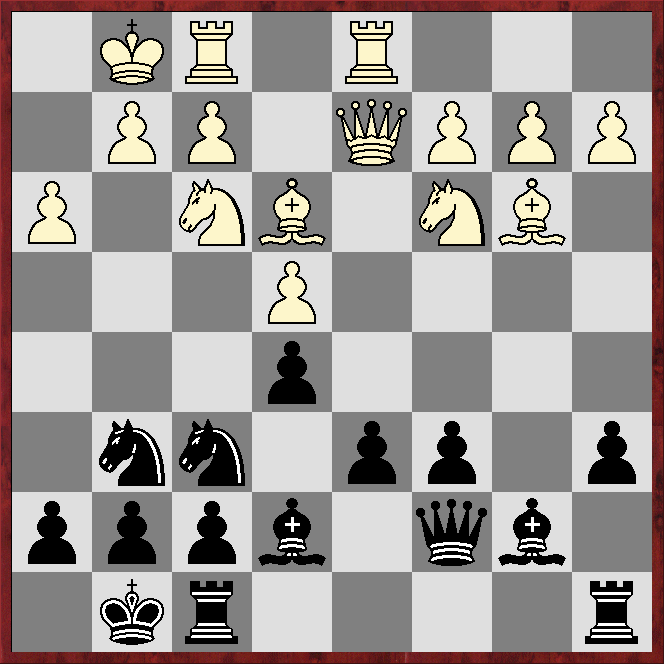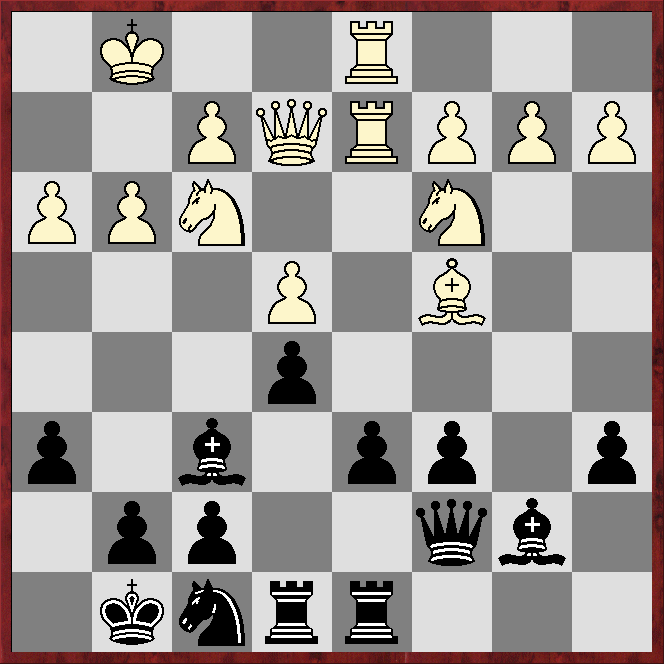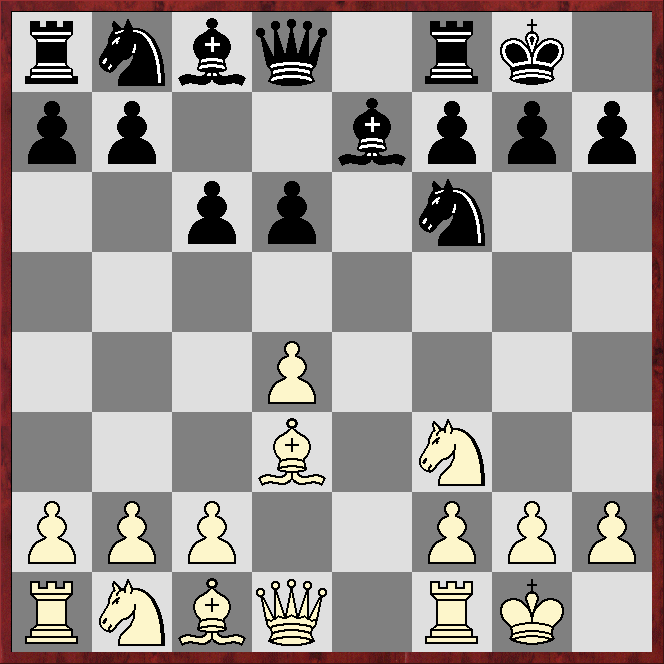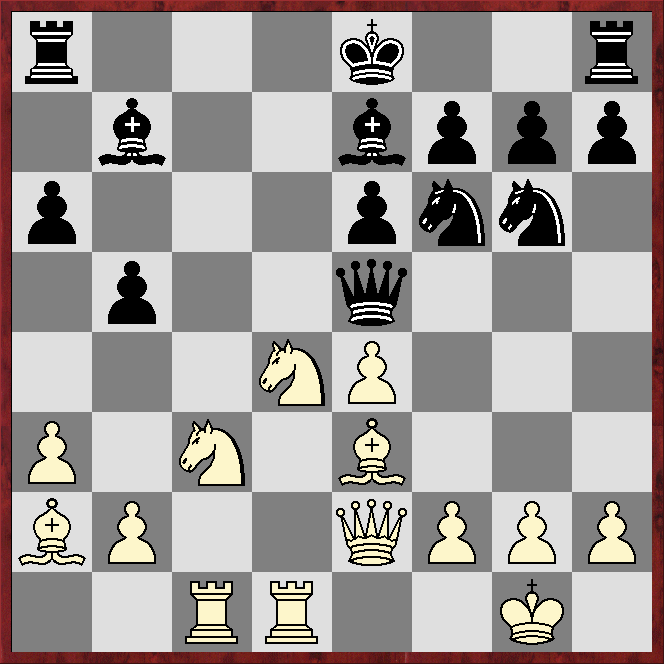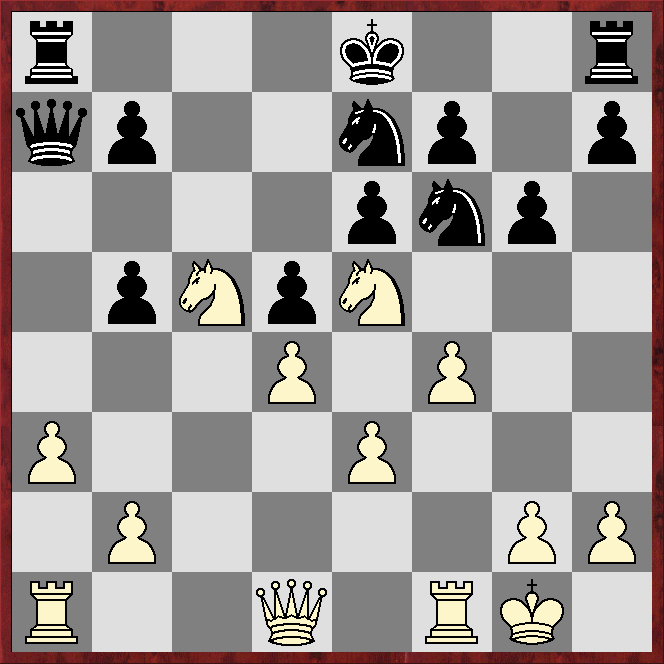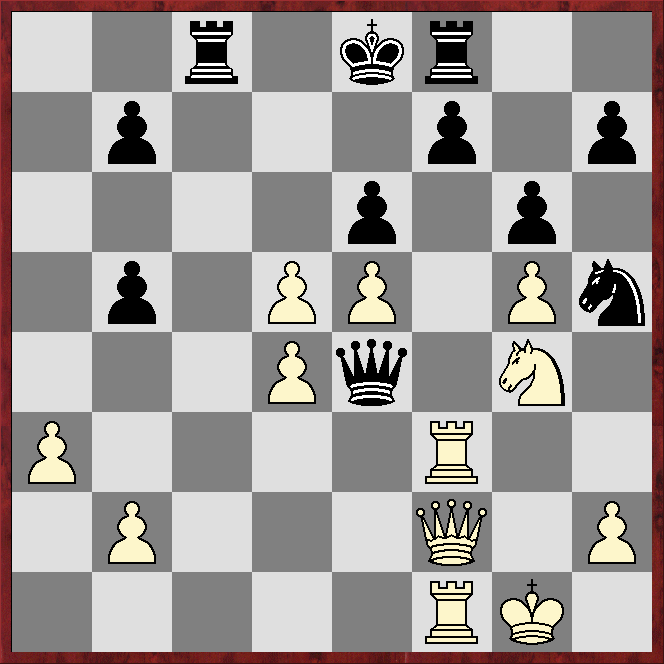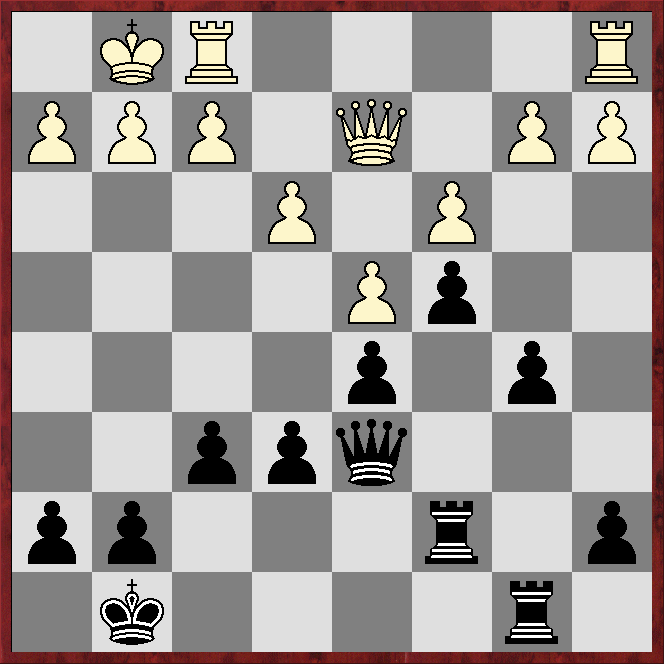Townsend's score of +4=3-0 saw him occupy top board for the last five rounds, and included this win from round five.
Paul Townsend (2229 ECF/2149 Fide) - Stephen Dilleigh (2044 ECF/2024 Fide)
Réti
1.c4 e6 2.Nf3 d5 3.g3 dxc4!?
This scores an excellent 52% in ChessBase's 2025 Mega database, 11 percentage points better than the much more popular 3...Nf6.
4.Bg2
Richard Réti preferred 4.Qa4+.
4...Nf6
The main line in Mega25 runs 4...a6!? 5.0-0 Nf6 6.a4 Nc6 7.Qc2 (also popular is 7.Na3) Na5!? 8.Na3 Qd5!? 9.Rd1 Bd7, with a slight edge for Black, according to Stockfish17 and Dragon1.
5.Qa4+ Nbd7 6.Qxc4 c5 7.Qb3!?
This relatively modern continuation - the first example in Mega25 is from a game of Arshak Petrosian's in 1977 - scores a very good 61% in the database.
*****
*****
*****
*****
7...Rb8
This is the commonest move.
8.a4 Bd6!?
Possibly a novelty. Known moves are 8...b6 and 8...Be7.
9.Na3 a6 10.Nc4 Bc7 11.a5 0-0 12.0-0
*****
*****
*****
*****
Black will have trouble developing his queenside without allowing weaknesses. The engines reckon White is slightly better.
12...b5 13.axb6 Nxb6 14.Nxb6 Rxb6 15.Qc2 Rb5
White's b pawn is weak, but so are Black's a and c pawns.
16.d3 Bb7 17.Nd2!? Bxg2 18.Kxg2 Qd5 19.e4!? Qb7 20.Nc4 Nd7 21.Bd2 Ne5 22.Bc3 Nxc4 23.dxc4 Rb6 24.Rfd1 Rd6 25.Rxd6 Bxd6 26.f3 Be7 27.Qa4 Rd8?
Hoping to create counterplay, but it should never materialise. The engines suggest 27...Ra8 or 27...Qc7!? The idea of the latter is to meet 28.Qxa6 with 28...Bf6!?, when 29.Bxf6 gxf6 allows the black rook the opportunity to occupy the d file much more effectively, or to pressurise down the b file, eg 30.Qa3 (30.Rd1 Rb8) Rb8 31.Qc3 Qe5 32.Qxe5 fxe5, when the engines reckon Black, despite being a pawn down, is completely equal.
28.Qxa6 Qd7 29.Rf1?
As is often the case, passive rook play is a mistake. The engines reckon White is winning after 29.Qa7.
29...h5
The engines also like 29...Qd3.
30.Rf2 Qd1 31.Qa7 Rd7 32.Qb8+ Rd8 33.Qe5 Bf6 34.Qxc5 Bxc3 35.bxc3 Qe1 36.Qxh5 Rd1!? 37.Qc5 Qg1+?
This spends a tempo driving the white king to safety, whereas 37...Rc1 prepares to win back one pawn (c3) and put pressure on what will be the remaining passer (c4), with good drawing chances.
38.Kh3 g6 39.Qe3 Re1 40.Qd4 e5 41.Qd8+?
Both 41.Qd2 and 41.Qb6 are winning, according to the engines.
41...Kg7 42.Rg2 Qf1 43.Qd2 Qxf3
*****
*****
*****
*****
44.Rf2 Qxe4 45.c5 f5!? 46.Qg5
*****
*****
*****
*****
46...Rg1?
The queen-and-pawn ending, forced after 46...Re2, is completely equal, according to the engines.
47.Rd2 Qg4+!?
This is the engines' top choice, but the rook-and-pawn ending is hopeless for Black.
48.Qxg4 fxg4+ 49.Kxg4 Rc1 50.Rd3 Ra1 51.c6 Ra5 52.Rd7+ Kf6 53.Rd6+ Kf7 54.Kf3 Rc5 55.Ke4 g5 56.Rh6 Rxc3 57.Kxe5 Kg7 58.Rd6 Kf7 59.Kd5 Rc2 60.Rd7+ Ke8 61.Rh7 Kd8 62.Kd6 Rd2+ 63.Ke6 Rc2 64.c7+ Kc8 65.Kf6 g4 66.Kf5 Rc4 67.Rg7 Kb7 68.Rxg4 Rxc7 69.h4 1-0







